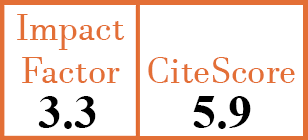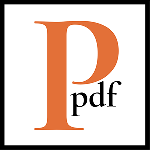Full Papers
Interferon-regulated chemokine score associated with improvement in disease activity in refractory myositis patients treated with rituximab
C.M. López De Padilla1, C.S. Crowson2, M.S. Hein3, M.A. Strausbauch4, R. Aggarwal5, M.C. Levesque6, D.P. Ascherman7, C.V. Oddis8, A.M. Reed9
- Division of Rheumatology, Department of Pediatrics, Mayo Clinic, Rochester, USA.
- Division of Rheumatology, Department of Pediatrics; and Division of Biomedical Statistics and Informatics, Department of Health Science Research, Mayo Clinic, Rochester, USA.
- Division of Rheumatology, Department of Pediatrics, Mayo Clinic, Rochester, USA.
- Department of Surgical Research, College of Medicine, Mayo Clinic, Rochester, USA.
- Division of Rheumatology and Clinical Immunology, University of Pittsburgh School of Medicine, Pittsburgh, PA, USA.
- Division of Rheumatology and Clinical Immunology, University of Pittsburgh School of Medicine, Pittsburgh, PA, USA.
- Division of Rheumatology, University of Miami, Miami, FL, USA.
- Division of Rheumatology and Clinical Immunology, University of Pittsburgh School of Medicine, Pittsburgh, PA, USA.
- Department of Pediatrics, Duke Children's Hospital, Duke University Medical Center, Durham, NC, USA.
CER8058
2015 Vol.33, N°5
PI 0655, PF 0663
Full Papers
Free to view
(click on article PDF icon to read the article)
PMID: 26446265 [PubMed]
Received: 24/10/2014
Accepted : 13/03/2015
In Press: 05/10/2015
Published: 05/10/2015
Abstract
OBJECTIVES:
The purpose of this study was to investigate whether serum interferon (IFN)-regulated chemokine and distinct cytokine response profiles are associated with clinical improvement in patients with refractory inflammatory myopathy treated with rituximab.
METHODS:
In a randomised, placebo-phase trial Rituximab in Myositis Trial (RIM), 200 refractory adult and paediatric myositis subjects received rituximab. Following rituximab, clinical response and disease activity were assessed. Serum samples and clinical data were collected at baseline and several time-points after rituximab treatment. Multiplexed sandwich immunoassays quantified serum levels of IFN-regulated chemokines and other pro-inflammatory cytokines. Composite IFN-regulated chemokine and Th1, Th2, Th17 and regulatory cytokine scores were computed.
RESULTS:
Baseline IFN-regulated chemokine, Th1, Th2, Th17 and regulatory cytokine scores correlated with baseline physician global VAS, whereas the baseline Th1, Th2 and Th17 cytokine scores correlated with baseline muscle VAS. We also found baseline IFN-regulated chemokine scores correlated with specific non-muscular targets such as baseline cutaneous (r=0.29; p=0.002) and pulmonary (r=0.18; p=0.02) VAS scores. Among all cytokine/chemokines examined, the baseline score of IFN-regulated chemokines demonstrated the best correlation with changes in muscle VAS at 8 (r=-0.19; p=0.01) and 16 weeks (r=-0.17; p=0.03) following rituximab and physician global VAS at 16 weeks (r=-0.16; p=0.04). In vitro experiments showed increased levels of IL-8 (p=0.04), MCP-1 (p=0.04), IL-6 (p=0.03), IL-1β (p=0.04), IL-13 (p=0.04), IL-10 (p=0.02), IL-2 (p=0.04) and IFN-γ (p=0.02) in supernatants of TLR-3 stimulated PBMCs from non-responder compared to patients responders to rituximab.
CONCLUSIONS:
IFN-regulated chemokines before treatment is associated with improvement in disease activity measures in refractory myositis patients treated with rituximab.


